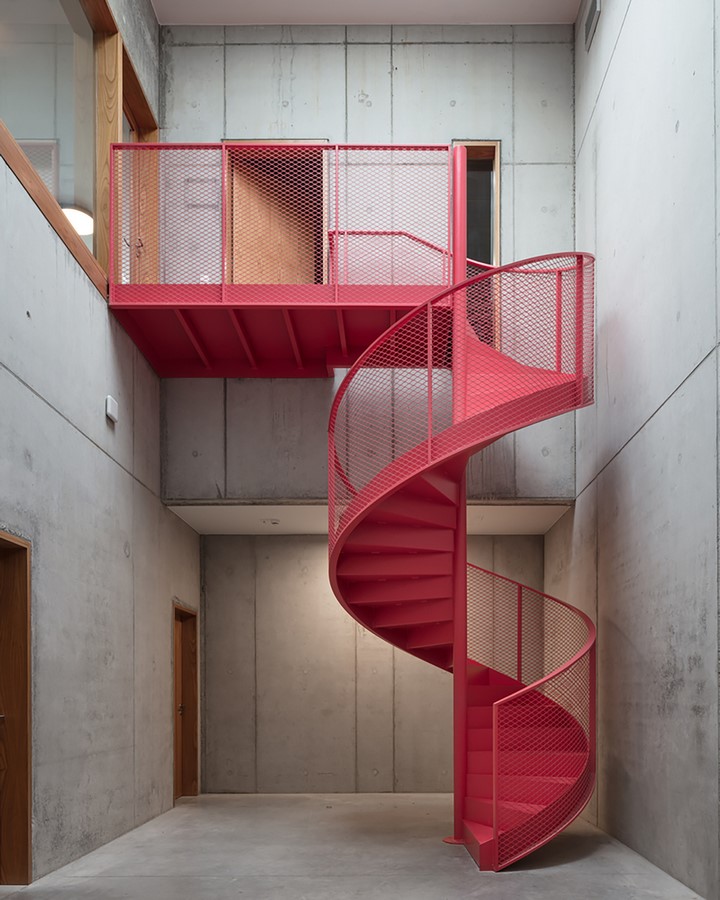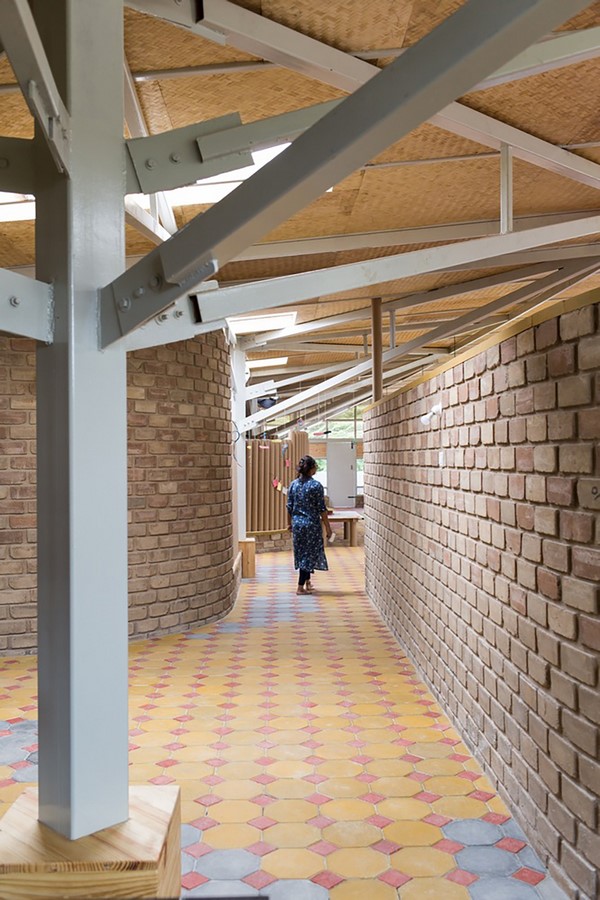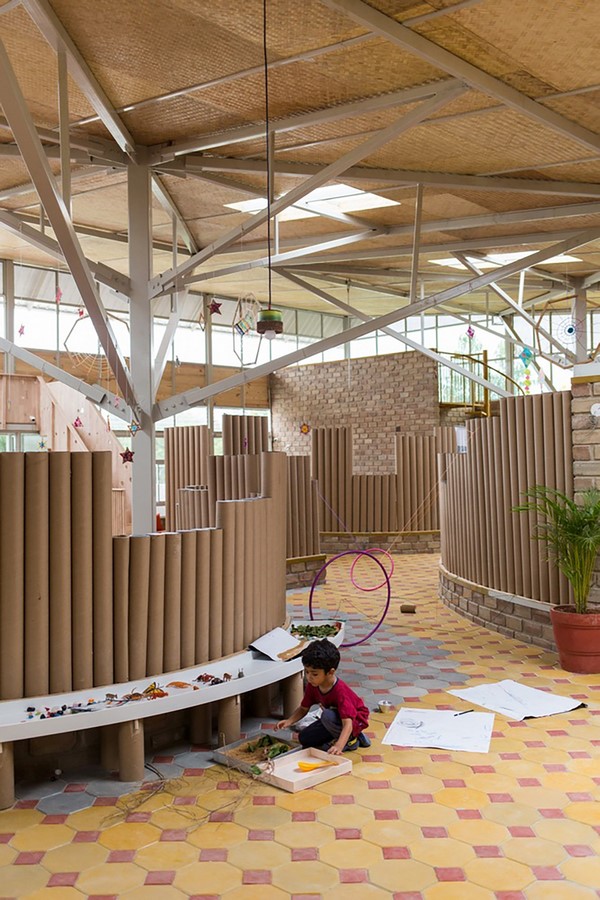The Craftsmanship of Space
The name “tectonics” comes from the Greek words “techne” (the art of making) and “tekton” (carpenter), denoting the essence of construction as an art form. Tectonics goes beyond simple construction; it captures the spirit of artistry, culture, and context in the design of environments. It reflects its cultural and contextual setting, echoing embedded meanings. Tectonics, in essence, is the art of storytelling through construction.
Kenneth Frampton, in his enlightening essay “Rappel A L’ordre, The Case for the Tectonic,” propounds that tectonics is about expressing weight, the joining of materials, and the formation of spaces through construction. It seeks to explore the very essence of human space by unravelling connections, supports, and the shaping of environments. Tectonics is an extension of the understanding of human space, where structure, a once abstract concept, becomes tangible through construction and visually articulated through tectonics. By linking, sustaining, and sculpting space, it makes an expressive statement on the state of humanity. Tectonics is essentially the art of integrating form and function.
Of material and materiality
Being material or made of matter is referred to as having a material attribute or character. The art of selection and use of materials, finishes, surfaces. It comprises the physical properties and characteristics of these materials and how they contribute to the overall look and functionality of the interior space.
The forms that interior rooms might take are greatly influenced by the material choices made.
Materials possess their own language of design. For instance, heavy masonry units demand a certain rigidity in form, while lightweight steel framing allows for flexibility and fluidity. The spaces within these materials reflect their intrinsic properties.

The relationship between structure, material, and form is intricately governed by materiality. A wall constructed from heavy masonry units adheres to a defined form, whereas a lightweight steel frame enables a more organic and freeform design. The spaces thus conceived are shaped by the inherent characteristics of the selected materials, bridging the realms of tectonics and materiality.
Technology, technique, and tectonic are what separate and bind them together.
Technology refers to the tools, equipment, and methods used in the construction and implementation of design ideas. It encompasses the practical aspects of turning design concepts into tangible spaces. For example, the use of 3D modelling software or advanced lighting systems can be considered technological elements in interior design.
Technique relates to the specific skills and methods employed by designers and craftsmen to execute design plans. It encompasses the craftsmanship and expertise required to bring a design vision to life. Techniques can include woodworking, upholstery, painting, and various other specialized skills that contribute to the creation of interior spaces.
Tectonic goes beyond mere construction or technology.It explores the connections, supports, and forms that shape human spaces, imbuing them with meaning and context.
Spaces through materiality
Understanding the semantic associations of materials and their manufacturing technologies is pivotal in constructing meaning, evoking atmospheres, and eliciting emotional responses in interior design. For instance, mahogany wall panelling can evoke a sense of Victorian sophistication, while glossy, vibrant vinyl fabrics can set a futuristic ambience. The choice of materials and their contextual application becomes a powerful tool in the hands of designers.
Atelier School, Bangalore, by Biome Environmental, is considered as an example to understand the concepts of design sensibilities and material tectonics. Here, enclosures are designed to achieve dynamism, with local materials taking precedence over conventional choices. A configurable system, innovative column designs, and the artful assembly and disassembly of interior elements collectively craft a profound sense of space and enclosure.
The process places significant emphasis on the quality of joints between materials, components, and systems, accentuating the aspect of tectonic assembly in interior elements (Biome Environmental, n.d.).
Delving into the details of tectonic expression,
The Atelier School in Reggio Emilia serves as an example of the fusion of tectonic materiality and design sensibility. Designed as a temporary structure, it can be dismantled, with both materials and land reclaimed entirely. The permeable design of spaces aligns with the education system.


Tectonic Aspects
Modularity and dismantlability: The design of the Atelier School underscores its tectonic flexibility. Being conceived as a temporary structure, it is ingeniously designed for ease of dismantling. This feature aligns with the principles of tectonics, emphasizing the importance of understanding the assembly and disassembly of architectural elements. The structure’s modularity allows for the reclamation of both materials and land, a testament to sustainable construction practices.
Columnar support system: The presence of eight branching columns supporting a sloping roof is a noteworthy tectonic decision. These columns not only serve as structural elements but also contribute to the overall aesthetic by creating a gentle shift in scale within the interior. This clever manipulation of form and function reflects the essence of tectonics, where structural elements become integral to the design narrative.
Curvilinear spaces: The use of walls of varying heights to enclose curvilinear spaces is a tectonic choice that blurs the boundaries of volume within the interior. This manipulation of space challenges traditional notions of compartmentalization, creating an open, dynamic, and interconnected environment. It is a prime example of tectonic expression through the shaping of spatial experiences.
Material Aspects:
Indigenous Construction Techniques: The project’s emphasis on indigenous construction techniques, such as the chappadi granite stone slab foundation, tactile flooring with paver blocks, and Compressed Stabilized Earth Blocks (CSEBs), reflects a deep consideration for materiality. These choices are not only rooted in local resources but also embody the spirit of sustainable design. Materiality, in this context, is about working harmoniously with the environment and available materials to create a built form.

Bamboo Plywood False Ceiling: The selection of bamboo plywood for the false ceiling serves as a testament to the designer’s understanding of materiality. Bamboo, being a sustainable and lightweight material, not only contributes to the project’s eco-friendliness but also creates a visual contrast with the metallic frame. This contrast adds depth and character to the interior, showcasing how material choices can impact the overall aesthetics.
Paper-Tube Partition Walls: The use of paper-tube partition walls is a unique and innovative material choice. These walls not only contribute to the building’s transposable nature but also play a vital role in the perception of space. The varying heights of these partitions, combined with their curvature, create an ever-changing spatial experience. Materiality here is about pushing the boundaries of conventional materials to achieve both functional and aesthetic goals.
Synthesis
The Atelier School in Reggio Emilia exemplifies the seamless integration of tectonic materiality and design sensibility. This fusion underscores a larger concern in contemporary architecture and interior design. It demonstrates that by carefully considering the craftsmanship of construction and the selection of materials, designers can create spaces that not only serve their intended functions but also resonate with users on a profound level.
Interior design sensibility entails the art of orchestrating material choices, tectonic materiality, and innovative design elements to craft spaces that are adaptable, visually captivating, inclusive, sustainable, and sensorially rich. It goes beyond aesthetics to create environments that inspire, engage, and connect with users on a profound level, making interior design an art form that elevates human experiences within built spaces.
Reference List
Anon, (n.d.). Projects – Biome Environmental Solutions. [online] Available at: https://www.biome-solutions.com/projects-page/#post-2427 [Accessed 4 Sep. 2023].
Beim, A. and Ulrik Stylsvig Madsen (2014). Towards An Ecology Of Tectonics. The Need For Rethinking Construction In Architecture. Fellbach: Edition Axel Menges Gmbh.
Bonnamour-Lloyd, D. (n.d.). TECTONIC MATERIALITY POETICS V S PRAXIS. [online] Available at: https://www.acsa-arch.org/proceedings/International%20Proceedings/ACSA.Intl.1997/ACSA.Intl.1997.50.pdf.
Corb (2018). Materiality in Architecture. [online] Room Temperature Black Coffee. Available at: https://corbley.wordpress.com/2018/01/30/1558-2/ [Accessed 4 Sep. 2023].
Guler, K. (n.d.). Interior Materiality Interior Materiality. [online] Available at: https://newprairiepress.org/cgi/viewcontent.cgi?article=1042&context=ebooks [Accessed 5 Sep. 2023].
matter (2016). The Atelier: Biome Environmental Solutions. [online]
MATTER. Available at: https://thinkmatter.in/2016/11/24/the-atelier/.
Schwartz, C. and Ford, E.R. (n.d.). Introducing architectural tectonics : exploring the intersection of design and construction.















